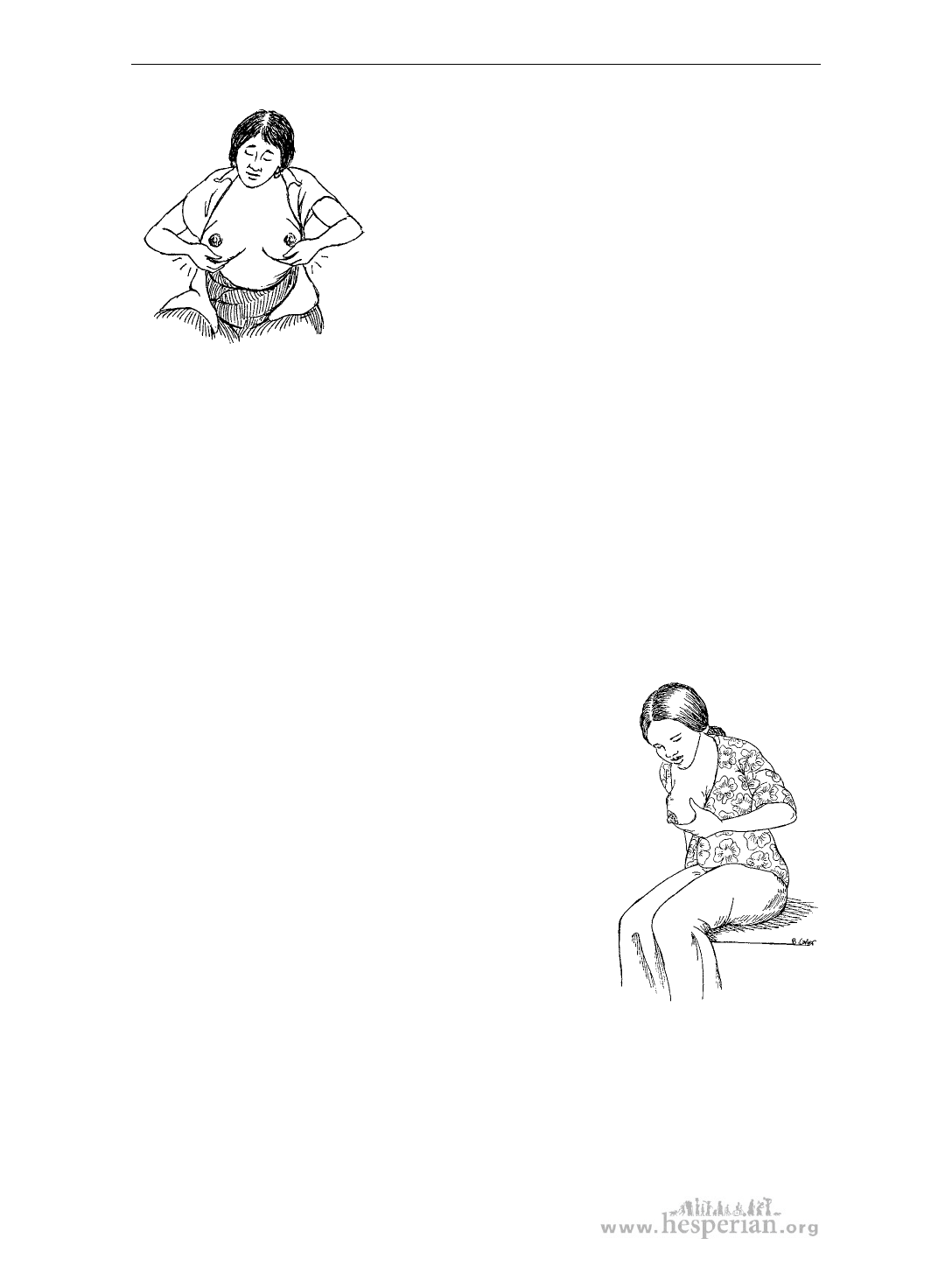
Chapter 16: Breastfeeding
Engorged (swollen) breasts
Sometimes a mother’s breasts get very full and
hard, especially during the first few days after the
birth. This can be painful for the mother and also
makes her more likely to develop a breast
infection. It can also make it hard for the baby to
suck the breast. If the mother begins breastfeeding
the baby very soon after the birth, and feeds often,
she may avoid this problem.
But if a mother’s breasts do get swollen, she can
try the following:
• Breastfeed the baby more often, both day and night (every 1 or 2 hours, and
on both breasts).
• Place hot, wet cloths on the breasts for 15 to 20 minutes before each feeding.
• Put ice, cool cloths, or fresh cabbage leaves on the breasts between feedings.
Let the milk leak freely and support the breasts with a bra or cloth.
• If the baby has trouble getting onto the breast because it is swollen, remove a
little milk by hand until the breast is soft enough for the baby to take.
Encourage the mother and remind her that this problem will go away soon.
Painful lump in the breast (abscess)
If a painful lump forms in the breast, the milk is probably
getting stuck in one part of the breast. If the lump is not
treated, the breast can easily become infected.
If a mother has a painful lump, she should:
• breastfeed frequently (every 1 or 2 hours), giving the
baby the sore breast first. If for some reason the mother
cannot breastfeed, she must remove the milk by hand.
• stay in bed and keep the baby with her so he
can feed often.
• drink lots of liquid.
• place hot, wet cloths on the sore breast for
15 to 20 minutes before each feeding.
• use ice or cold cloths between feedings to
lessen the pain.
• gently massage the lump as the baby feeds.
Some women have gotten rid of an abscess by drinking 1 tablespoon of
vinegar in a cup of water every hour. Putting cabbage leaves on the abscess
also might help.
288
A Book for Midwives (2010)